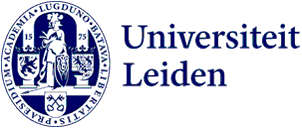
Four Vici grants for Leiden University researchers
Four researchers from Leiden University have been awarded prestigious Vici grants the Dutch Research Council (NWO) has announced. The honoured applications are from researchers at the Faculty of Social and Behavioural Sciences, Leiden Observatory, the LUMC and the Faculty of Archaeology.
The researchers domains will receive Vici grants worth up to 1.5 million euros. This will enable the laureates to develop an innovative line of research and set up their own research group over the next five years.
The Leiden recipients of a Vici grant:
Ellen de Bruijn, Faculty of Social and Behavioural Sciences
From puberty to menopause: neurocognitive research on hormonal changes in women. Girls and women experience large hormonal fluctuations from pre-adolescence to late adulthood, but little is known about how these variations affect neurocognitive functioning. This research will establish how naturally occurring hormonal changes affect performance in individual and social contexts, and will examine their relationship with mental health and well-being across the female lifespan.
Mariska Kriek, Leiden Observatory
Galaxies are immense structures consisting of stars, gas, dust, black holes, and dark matter. The formation of galaxies is still poorly understood, mostly because we lack good observations of galaxies during their crucial early stages. The recently launched James Webb Space Telescope, with its large mirror and infrared eyes, will finally remedy this situation. This research programme will use new and revolutionary observations with JWST to unravel the early stages of galaxy formation, crucial for understanding how galaxies in today’s universe came into existence.
Hermelijn Smits, LUMC
Severe viral respiratory infections often occur in infants, older people or lung patients, leading to hospitalisation or even death. Here, molecules of microorganisms from the gut flora are studied for their capacity to improve immunity against viruses in the nose leading to better protection against disease.
Alexander Geurds, Faculty of Archaeology
During pre-Columbian times, the Central American isthmus was marked by dynamic exchange and human mobility. Despite this, between AD 300 and the 16th century Spanish colonisation, indigenous communities were archaeologically stable, contrasting with the cycles of florescence and decline of neighbouring cultures, including the Maya. These far smaller and linguistically diverse groups were apparently more successful at mitigating the impact of regional geographical challenges and changes in the area and maintaining societal stability. How to explain this? For the first time, archaeologists ask, using Big Data, how this stability was achieved and what this may mean for societal resilience today.
